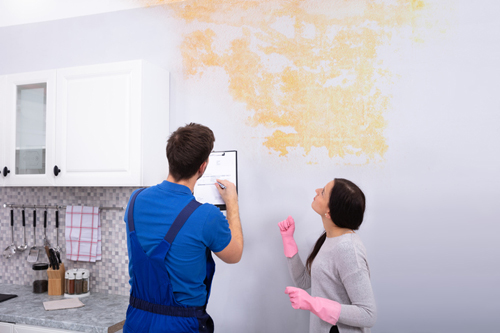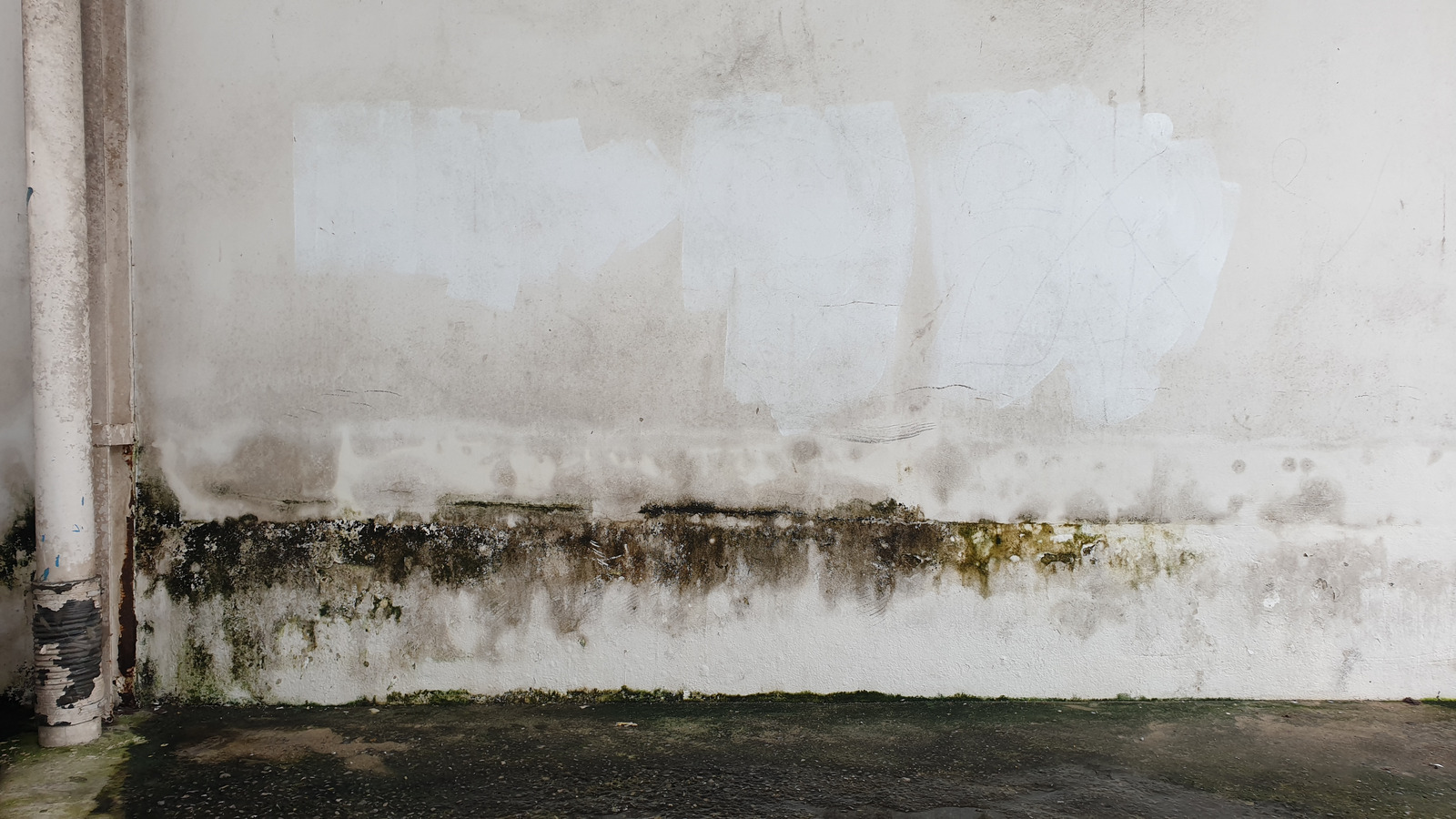What're your concepts on How to Find and Repair Water Leaking in the Wall?

Water discolorations on wall surfaces are not pleasant to the eyes. Your residence should be without spots on the wall surfaces, roof covering, or floors. That is the optimal state of a residence and also its structures. Sometimes it seems practically unavoidable to experience water spots on wall surfaces in residences.
Property owners living in damp areas regularly deal with the fear of water discolorations on walls. With well-rounded and also precise info on the causes of water stains and timely fixing processes, you will constantly be an action ahead of such events.
3 Common Sources Of Water Spots on Walls
Unlike common belief, water stains on wall surfaces do not always come from poor structure materials. There are numerous reasons for water stains on wall surfaces. These include:
Wet
When hot moist air meets dry cool air, it triggers water beads to form on the wall surfaces of buildings. This occurs in shower rooms and cooking areas when there is steam from food preparation or showers. The water beads can stain the bordering walls in these parts of your home as well as infect other locations.
Wet or condensation impacts the roof and also wall surfaces of buildings. This causes them to appear darker than various other locations of the house. When the wall surface is wet, it develops an ideal setting for the development of microbes and fungi. These might have unfavorable results on health, such as allergies and respiratory problems.
Poor Drainage
When making a structure plan, it is critical to make certain sufficient water drainage. This will prevent water from permeating into the wall surfaces. Where the water drainage system is obstructed or nonexistent, below ground moisture builds up. This links to extreme dampness that you observe on the wall surfaces of your structure.
The leading reason of damp walls, in this case, can be a poor water drainage system. It can additionally result from inadequate monitoring of sewer pipelines that run through the building.
Pipeline Leaks
Many homes have a network of water pipelines within the wall surfaces. It constantly raises the feasibility of such pipelines, as there is little oxygen within the walls.
A downside to this is that water leak impacts the walls of the structure as well as causes widespread damages. A dead giveaway of damaged pipes is the appearance of a water tarnish on the wall.
Pro Tip
A houseplant in your house likewise increases its moisture. So, if the house is currently humid, you might wish to introduce houseplants with marginal transpiration. An example of appropriate houseplants is succulents.
Water Stains on Wall Surface: Repair Work Tips
Homeowners would typically desire a quick fix when taking care of water stains. Yet, they would certainly quickly realize this is disadvantageous as the water stains reoccur. Here are a few useful pointers that will direct you in the fixing of water stains on walls:
- Constantly fix the root cause of water discolorations on wall surfaces
- Involve the help of expert repair service solutions
- Practice routine cleanliness and also clean out clogged up sewage systems
- When building a home in a waterlogged location, make certain that the workers conduct appropriate grading
- Tiling locations that are prone to high condensation, such as the bathroom and kitchen, aids in lowering the build-up of damp
- Dehumidifiers are likewise practical in maintaining the dampness levels at bay
Conclusion
No one wants to have water spots on walls in their house, it can occur to the finest of us. This write-up gives you leverage, as you now understand exactly how to handle this incident if it does happen.
It is always best to recruit expert solutions to aid deal with the problems in your house.
Occasionally it appears virtually unpreventable to experience water discolorations on wall surfaces in homes.
Contrary to popular idea, water discolorations on wall surfaces do not constantly stem from bad building materials. There are several causes of water stains on walls. The water beads can tarnish the bordering walls in these parts of your home and spread to various other areas.
Below are a couple of practical ideas that will direct you in the repair of water stains on wall surfaces:
How to Remove Water Stains From Your Walls Without Repainting
The easy way to get water stains off walls
Water stains aren’t going to appear on tile; they need a more absorbent surface, which is why they show up on bare walls. Since your walls are probably painted, this presents a problem: How can you wash a wall without damaging it and risk needing to repait the entire room?
According to Igloo Surfaces, you should start gently and only increase the intensity of your cleaning methods if basic remedies don’t get the job done. Start with a simple solution of dish soap and warm water, at a ratio of about one to two. Use a cloth dipped in the mixture to apply the soapy water to your stain. Gently rub it in from the top down, then rinse with plain water and dry thoroughly with a hair dryer on a cool setting.
If that doesn’t work, fill a spray bottle with a mixture of vinegar, lemon juice, and baking soda. Shake it up and spray it on the stain. Leave it for about an hour, then use a damp cloth to rub it away. You may have to repeat this process a few times to get the stain all the way out, so do this when you have time for multiple hour-long soaking intervals.
How to get water stains out of wood
Maybe you have wood paneling or cabinets that are looking grody from water stains too, whether in your kitchen or bathroom. Per Better Homes and Gardens, you have a few options for removing water marks on your wooden surfaces.
- You can let mayonnaise sit on your stain overnight, then wipe it away in the morning and polish your wood afterward.
- You can also mix equal parts vinegar and olive oil and apply to the stain with a cloth, wiping in the direction of the grain until the stain disappears. Afterward, wipe the surface down with a clean, dry cloth.
- Try placing an iron on a low heat setting over a cloth on top of the stain. Press it down for a few seconds and remove it to see if the stain is letting up, then try again until you’re satisfied. (Be advised that this works best for still-damp stains.)
https://lifehacker.com/how-to-remove-water-stains-from-your-walls-without-repa-1849742925

I am very taken with How to Find and Repair Water Leaking in the Wall and I'm hoping you appreciated our post. Loved our blog entry? Please share it. Let another person check it out. Many thanks for taking the time to read it.
Contact Us Now
Comments on “Instructions to Detect and Repair Stains from Water on Wall Surfaces”